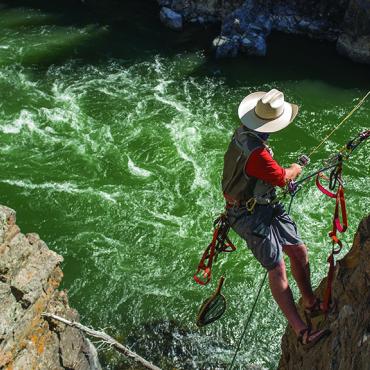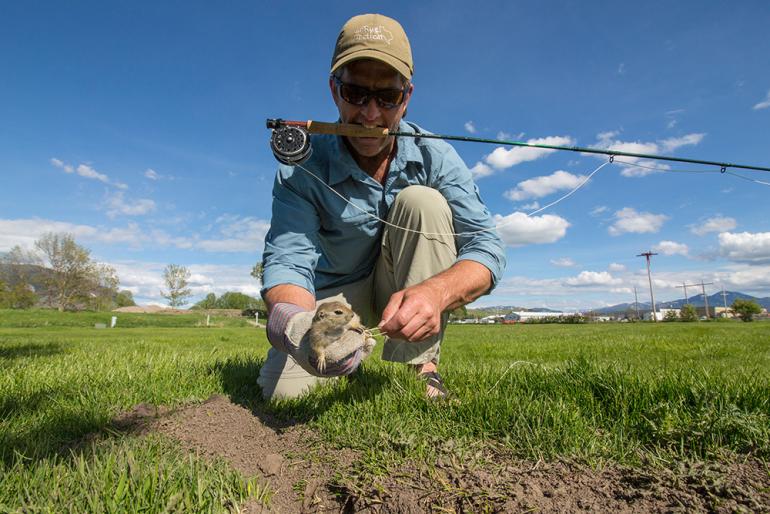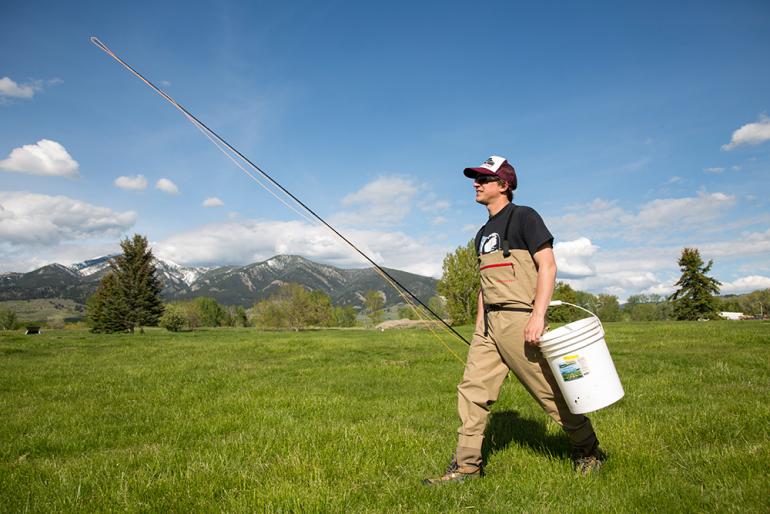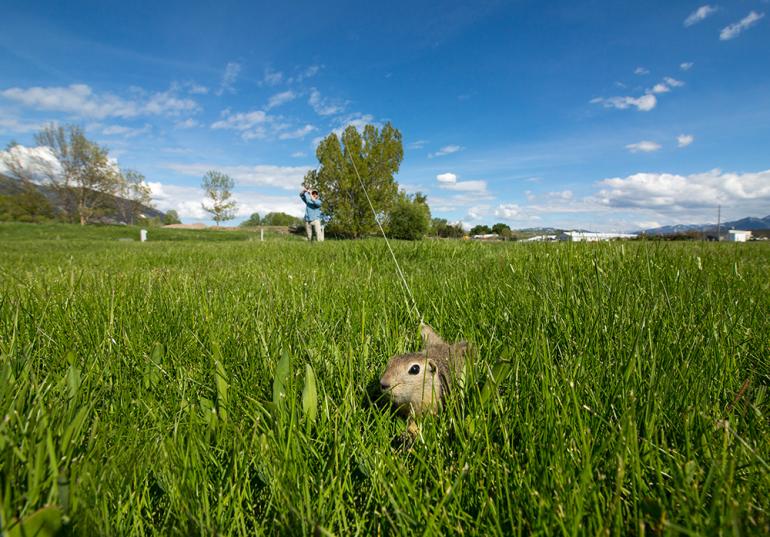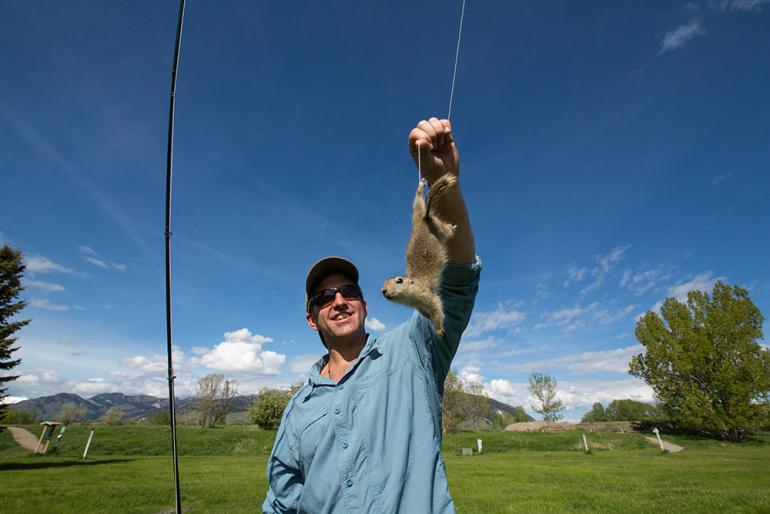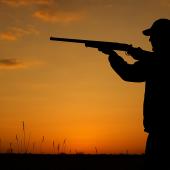It's in the Hole
Fly-fishing's latest craze.
Mist hangs low as dawn breaks over the water. Ducks preen silently in the shallows and red-winged blackbirds cry at your arrival. Your fly rod leans against the tailgate while you tie on tippet and craft a perfect knot, taking your time, savoring the buildup to what you know will be an explosive day of fishing.
This is a new stretch for you, with new holes to explore up and down the shore—filled almost certainly with fat browns. As you finish your coffee and peer toward the water’s edge, you see action out of the corner of your eye: a sudden rise, and it’s gone. Now another and another. You double-check your gear, grab your creel, and begin stalking down to the first hole. It’s time.
Cautiously, you position your line just above the hole, and wait for motion. And wait. And wait. They’re rising all around, almost curious, almost taunting—thick-bodied browns like none you’ve ever seen before. They’re everywhere, it seems, but where you expect. You saw them rising in this very hole, not five minutes ago—they must be there. They must.
And then it hits. There’s a tentative rise; a gentle nudge; and then it commits. You thrust your tip skyward and it’s on. The runs are impressive, powerful, and desperate. You work to pull it away from the depths of its hole, and play it toward your stance, slowly reeling it in as it tires. Finally, it’s within arm’s reach, and the moment of truth has arrived. It looks to be at least three pounds, with a sleek coat and subtle coloring. With a practiced shake, you don a welding glove on one hand, keep the rod high with the other, and reach for your wriggling catch in one fluid motion.
The moment you touch its back, it explodes with renewed fury. The spunky devil tries to bite, but is no match for your firm grasp. With a quick, practiced flip, you release the noose from its midsection and return it as quickly as possible back onto the field. It was a textbook catch and release, played to perfection—a Cinderella story, outta nowhere. You watch the gopher scurry back to the nearest hole and disappear without so much as a backward glance. He was moving well, and wasn’t played to exhaustion—he’ll be caught again.
Gopher Mania is sweeping the Montana angling community—and we’re not talking about plague. In fact, Montana’s home to one of the richest gopher fisheries in the world, with some areas boasting densities of up to 200 individual animals per acre. Not only are they plentiful, but also revered fighters—battles like this are the rule, not the exception. A gopher fisherman is largely attracted to the Whack-a-Mole unpredictability of his quarry. A gopher may exit the same hole 20 times, but as soon as a line is placed over its burrow, it may not emerge again for hours. Or if it does, it may only poke its nose out—just the tip, just to see how it feels. Of course, a responsible gopher fisherman doesn’t set the noose until the underbelly is fully visible, ensuring a mid-body catch.
The element of danger also plays a role in the recent Gopher Mania (not to be confused with Beaver Fever). Montana gophers are biters, and can carry bubonic plague, rabies, and parasites, and must be handled with caution. Heavy gloves are as essential as your fly rod for catching gophers, but the perilous rush of first contact is always a thrill.
When proper precautions and sporting ethics are followed, gopher fishing is a fun, rewarding way to experience southwest Montana’s blue-ribbon fields and pastures. And while we always advocate catch-and-release fishing, there’s no state limit on gophers—so you got that goin’ for ya, which is nice.
For more information, visit fish4gophers.com.

